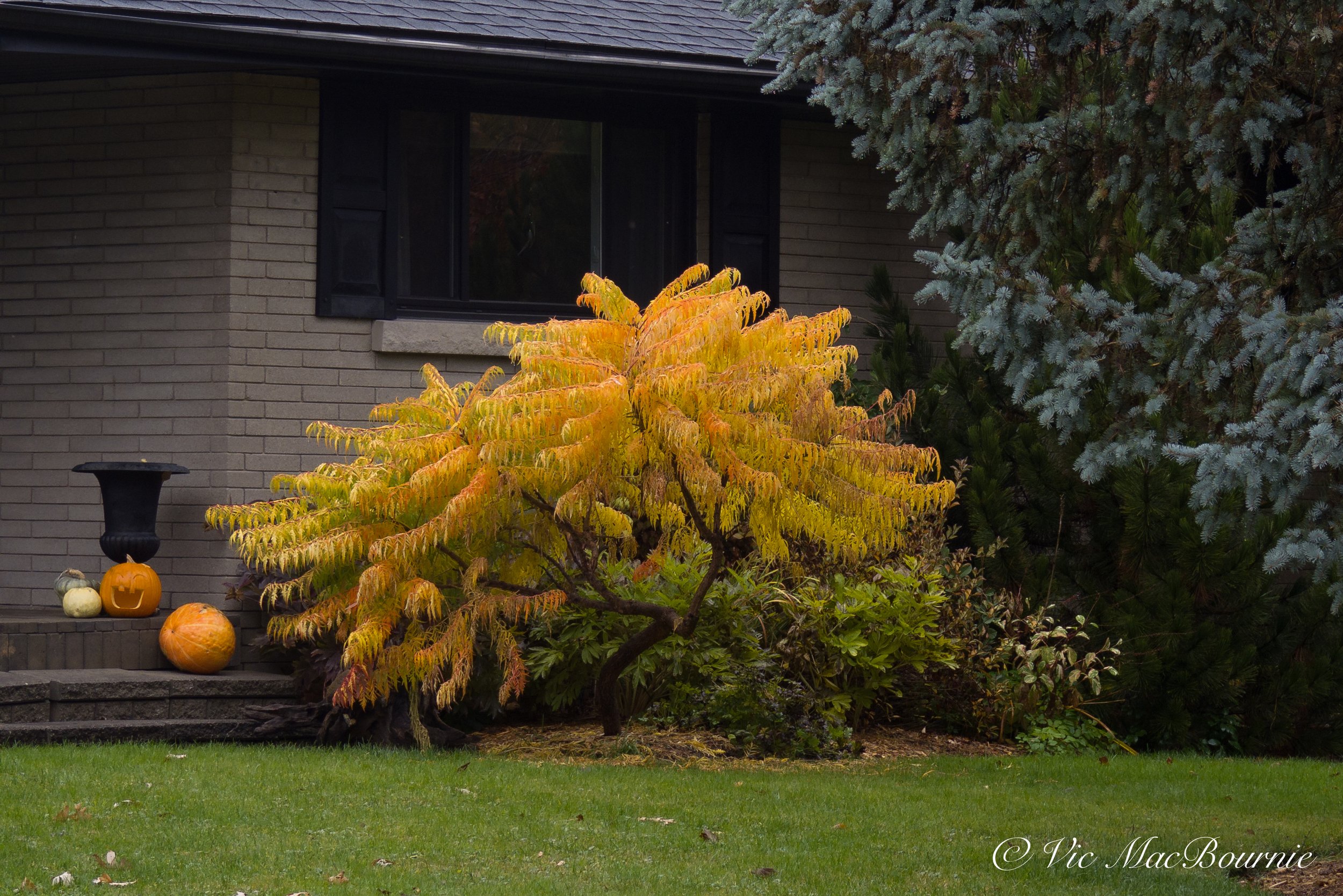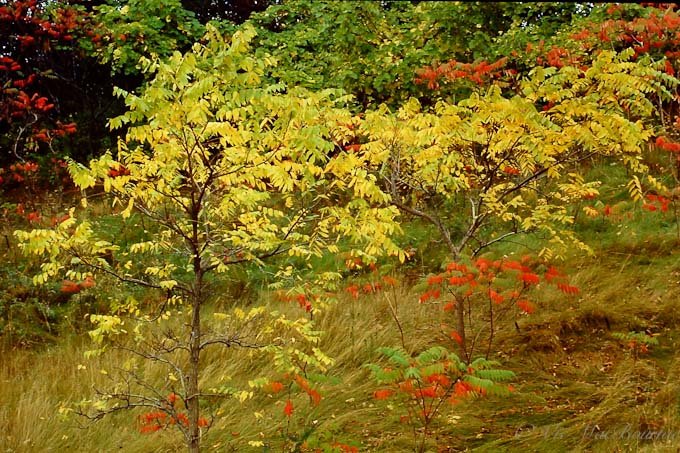Sumac: First signs of fall in the garden
Important food source for birds and other wildlife
It’s early October and the native Sumac is already lighting up the roadsides and welcoming the first signs of fall in the woodland garden.
Along roadsides and escarpments, where this fast-growing native shrub or small tree (grows to about 30-feet high) gets plenty of sun, Sumac lights up with brilliant oranges, yellows and reds.
It’s often the first plant nature photographers focus on when in search of early colour in the fall landscape, and it’s a perfect addition to the woodland garden. Sumac has compound, serrated leaves that are a bright green in summer before taking on its fall cloak.
How did Sumac get its name?
There is no missing the velvety bark on the branches that cover Staghorn Sumac. This velvet resembles the velvet that covers the antlers of male deer (stags) throughout the summer, earning Sumac the name “Staghorn”.
There are more than 30 varieties of Sumac in North America with more native varieties in Europe, Africa and Asia.
Is Sumac a food source for birds and other wildlife?
Not only is Staghorn Sumac (Rhus typhina) an incredibly colourful addition to the woodland, its fall berries, that grow in large clusters atop the shrub’s branches, are also a very important source of high-value food for birds especially migrating birds.
Staghorn Sumac puts out small greenish-yellow flowers that attract pollinators. They grow in the shape of a cone in spring and become the reddish-haired fruit clusters as summer turns to fall.
These hearty fruit clusters, that often remain on the plant well into winter, are vital resources for hundreds of bird species including our backyard favourites like Cardinals, Gray Catbird and a host of woodpeckers ranging from the impressive Pileated to the small Downy and larger Hairy woodpeckers. Add to that list the American Robin together with other thrush species. In a more wooded natural area, don’t be surprised if it attracts Ruffed Grouse and wild Turkeys.
As an added bonus these plants are deer resistant.
Staghorn sumac is dioecious, meaning that it has individually male and female plants.
These shrubs/small trees are extremely hardy, and are both drought and salt tolerant. They prefer a sunny location and dry to moist soil and will not tolerate shade or wet soil. Use these fast growers as an erosion control plant if you have problematic areas.
Where I live, The Niagara Escarpment is the dominant geological feature that cuts through the landscape. The Staghorn Sumac lights up the many cuts through the escarpment and turns the roadsides into sparkling jewels at certain times of day.
Staghorn Sumac is native to the more southern half of Ontario, and eastward to the Maritimes.
Sumac species include both evergreen and deciduous types. They generally spread by suckering, which allows them to quickly form small thickets, but can also make the plants overly aggressive in some circumstances.
There are usually several varieties available at nurseries, but this attractive native is probably all you will need.
Other forms of Sumac
At one of my local nurseries there are three Sumacs listed including the Staghorn Sumac. The others are Fragrant Sumac, and a dwarf variety of fragrant sumac called fragrant gro low Sumac as well as Cutleaf Smooth Sumac.
Cutleaf Smooth Sumac (Rhus glabra Laciniata) is a smaller hardy shrub (hardiness zone: 2B) with finely cut tropical-looking leaves that add texture to the garden. Grown primarily for its ornamental fruit, and its open multi-stemmed upright spreading habit. It lends an extremely fine and delicate texture to the landscape and can be used as a effective accent feature. Click on the link for more information on the Cutleaf Smooth Sumac.
Gro Low Sumac is described as low growing and compact shrub with interesting foliage turning brilliant colors in fall and bright yellow flowers in spring. Makes an excellent ground cover as it tends to sucker, filling in areas quickly. Does well in shade. Click on the link for images and more information on the Gro Low Sumac.
Fragrant Sumac is described as a rugged and durable medium-sized shrub with interesting foliage turning brilliant colors in fall and bright yellow flowers in spring. Tends to sucker, forming a dense spreading mass, attractive for a garden background or for naturalizing, good in shade.




